Not all birds fly, but those who do leave us pinned to the Earth, wondering how they do it. The avian body is perfectly designed for flight. This article will look into the science behind how birds fly so that you will no longer have to wonder – you will know how they do it.
Birds fly because their wings have an airfoil shape that creates lift when placed in a flowing air current. When air moves over a bird’s wings, more pressure is applied to the underside of the wing than to the top which creates lift. Their bodies have many other features that enable them to fly.
The above paragraph merely scratches the surface of bird flight. Read on to discover more about what makes their beautiful and awe-inspiring flight possible.

As an Amazon Associate, I earn from qualifying purchases. Birdwatch World earns commissions from Amazon and similar affiliate programs from any purchases made via links in this article.
What Does It Take To Fly?
Basically, the only thing needed for flight is the ability to overcome the force of gravity. You simply need enough force to leave the ground and stay aloft once you get up there.
Though gravity keeps us and everything else on the planet pinned to the ground, it really isn’t that hard to overcome its force. You can do it right now if you want to…just jump!

The problem that humans have is in staying up there once we successfully break gravity’s hold. Our bodies are not designed for flight. Our flimsy arms cannot create enough force to keep us in the air.
For birds, it is a completely different story. Their bodies have many traits that help them not only get off the ground but stay there for as long as they like.
How Do Wings Help Birds To Fly
As I mentioned earlier in the article, bird wings have what is called an airfoil shape. This means that their wings are wider at the front and taper off toward the back. This shape is what provides the lift birds need to get them into the air.
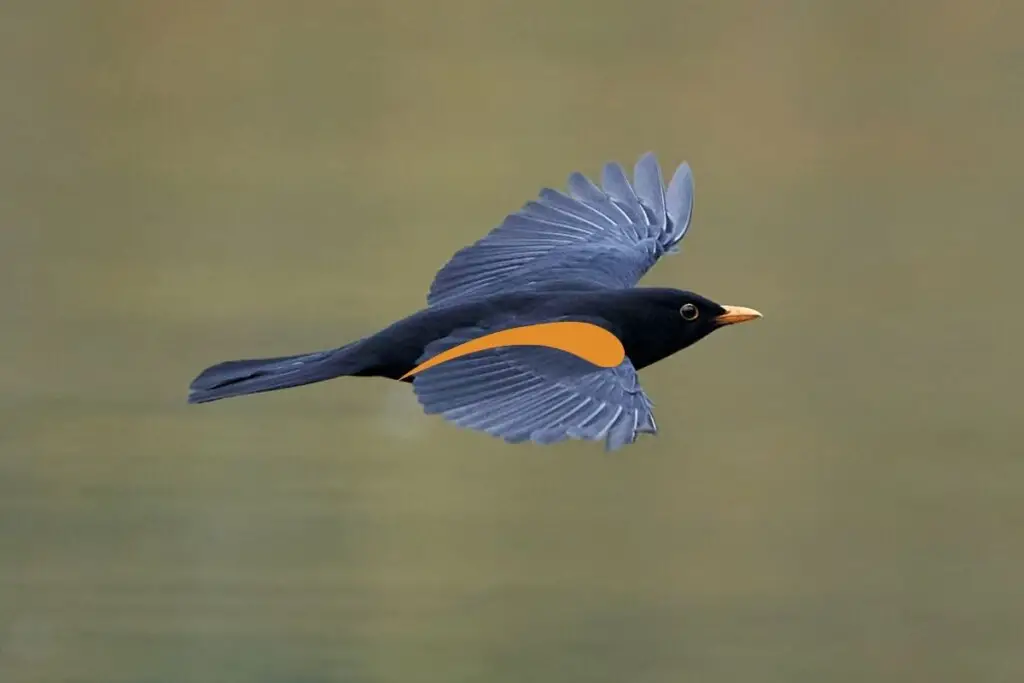
Discover all the reasons why birds fly in circles here in this article on my site.
How Wings Provide Lift
How does this airfoil shape provide lift? It has to do with how the air flows around the wings. You can feel this lift when you put your hand out of the window of a moving car.
Now air is not a liquid but it behaves like one. Imagine the air flowing over the bird’s wings as being like water flowing down a river. In a river, the flow is always slower where the river is wider and then speeds up as it narrows.
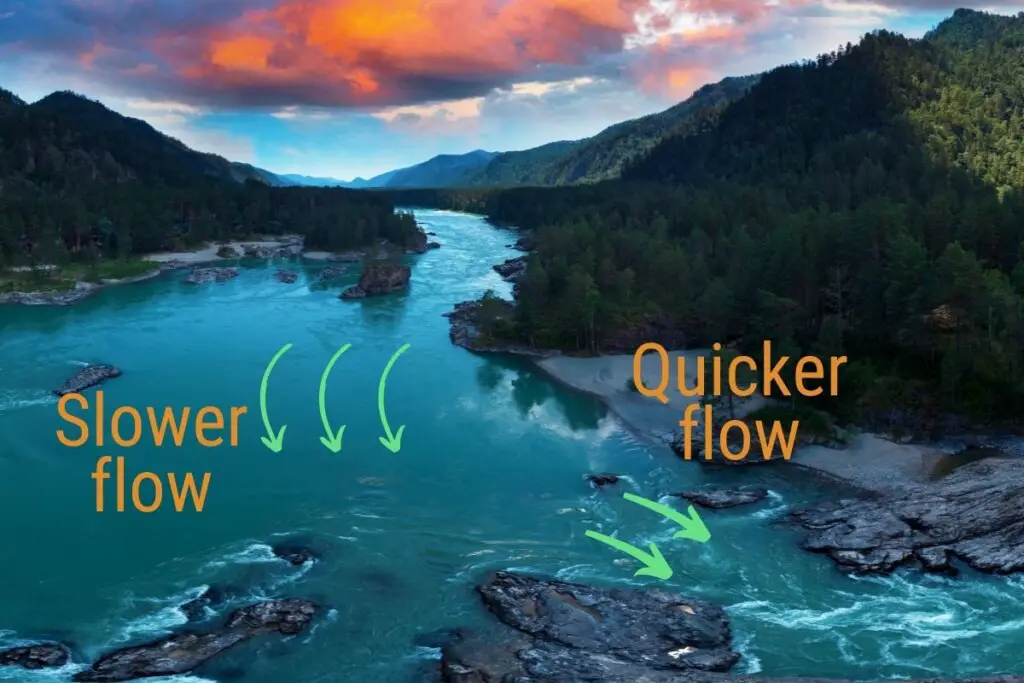
This happens because the same amount of water has to squeeze through a narrower space which forces it to flow faster.
Imagine the air passing around the bird’s wings as being like several rivers flowing side by side around an island.
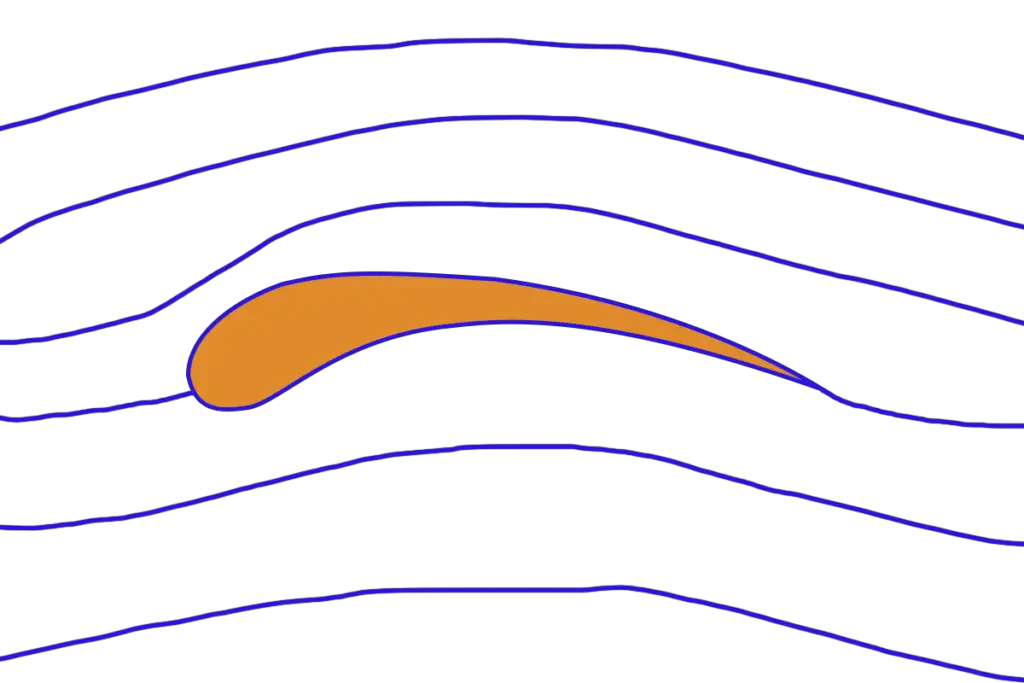
You can see from the diagram above that the river of air flowing over the wing becomes compressed and narrows. This makes this section of air speed up.
The river of air flowing beneath the wing widens and slows down.
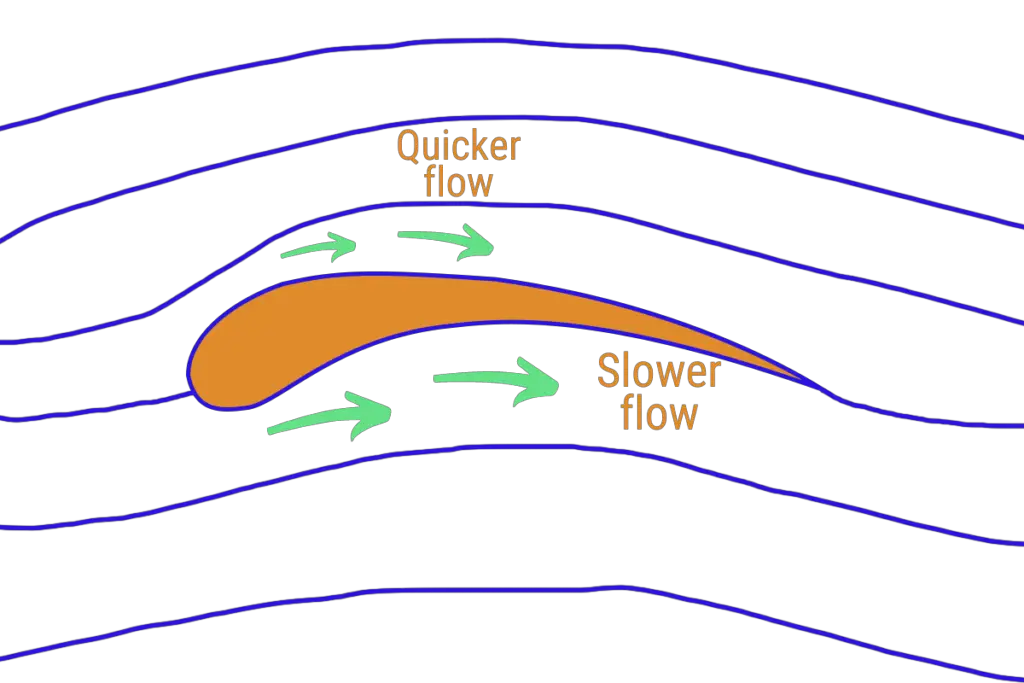
As the air above is passing over the wing surface quicker, it exerts less pressure on the wing. The slower air below exerts more force on the wing which creates lift.
Birds flap their wings to get more air to flow over them and thus create more lift. They also spread their wing feathers apart on the upstroke to create less drag on the surface of the wings (we’ll talk about drag a bit later on).
This explains how they get into the air but what about forward movement? How do birds accomplish this?
All that flying makes feathers dirty. Discover how birds clean them in this article.
Creating Forward Movement
Birds create forward movement by changing the angle of their wings in relation to the airflow. This is called the angle of attack.
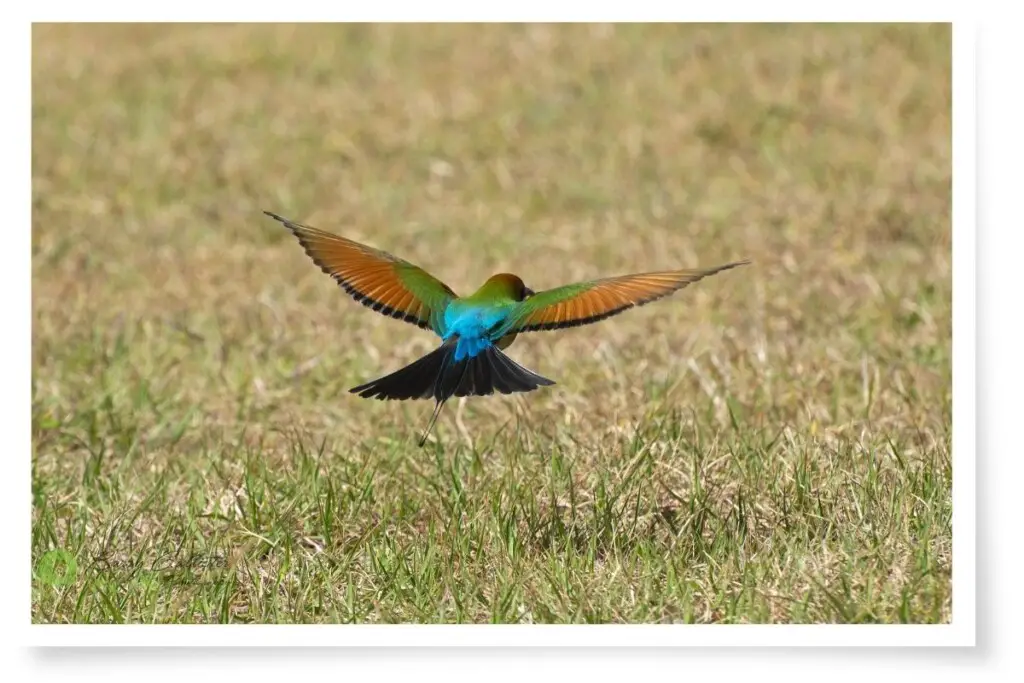
To move forward, a bird rotates its wings forward and down during the downstroke, then back and up during the upstroke. This causes lift which pushes the bird not just upward but forwards as well. This is called thrust.
You can see this technique in the video below of swans taking off:
All of this movement requires a lot of muscle power and also uses a lot of energy. Birds are physically and anatomically equipped to handle the demands of flight.
Different Wing Shapes
Each species of bird on the planet has a wing shape that is perfectly designed for its environment and the demands of living there. There are 4 general wing shapes:
1. Passive Soaring Wings
These wings have long primary feathers (the outermost feathers). Birds with these types of wings can fan out the tips of their primary flight feathers to increase the lift-producing part of the wing surface.
Examples of birds with this type of wings are eagles, hawks, and storks.
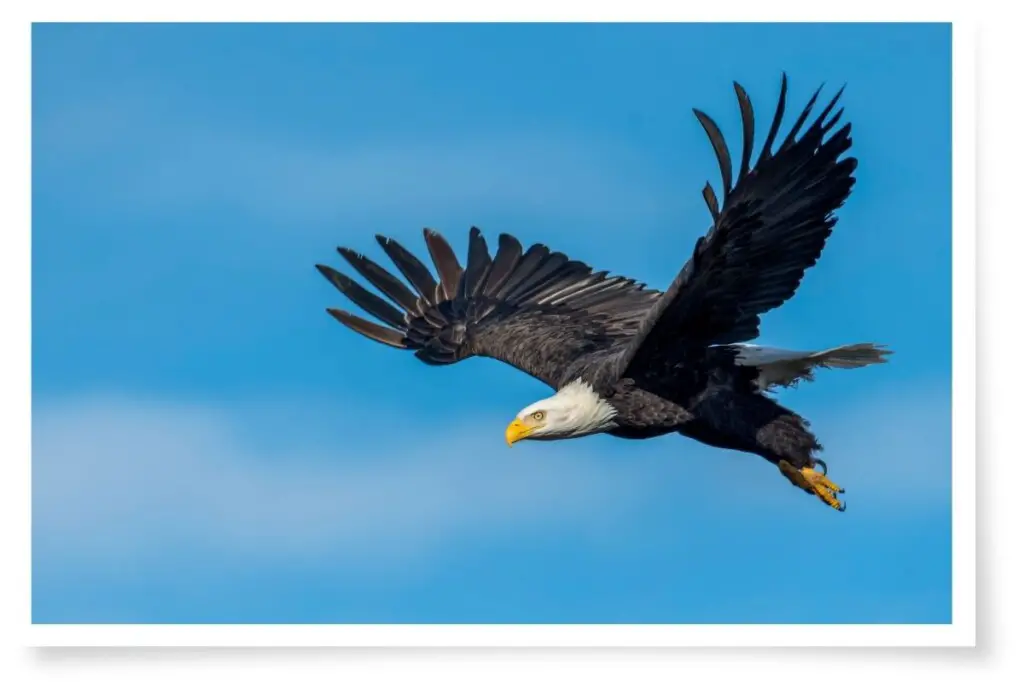
2. Active Soaring Wings
These wings are long and narrow, designed for long periods of soaring. Birds with these type of wings are more dependent upon wind currents than birds with passive soaring wings. They also have more difficulty taking off as their streamlined wings don’t create as much lift.
Examples of birds with this type of wing shape are albatrosses, gulls, and gannets.
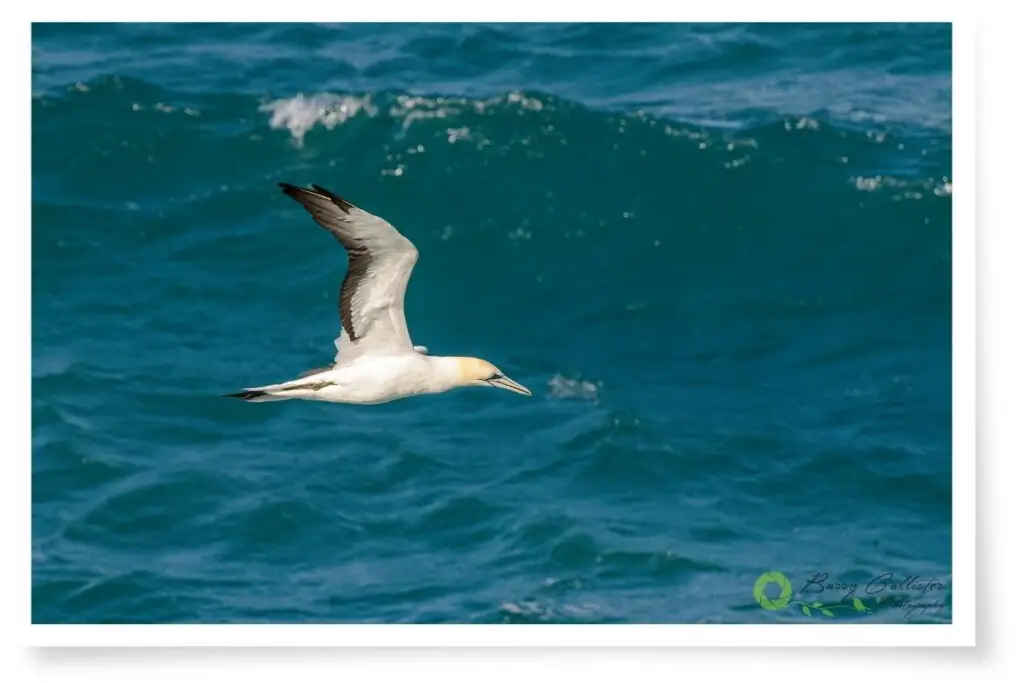
Discover the flightless birds of Australia in this post here on my blog.
3. Elliptical Wings
Elliptical wings are built for speed. Birds with this style of wing can take off quickly and maneuver incredibly well.
Examples of birds with this wing type are crows, ravens, sparrows, and thrushes.
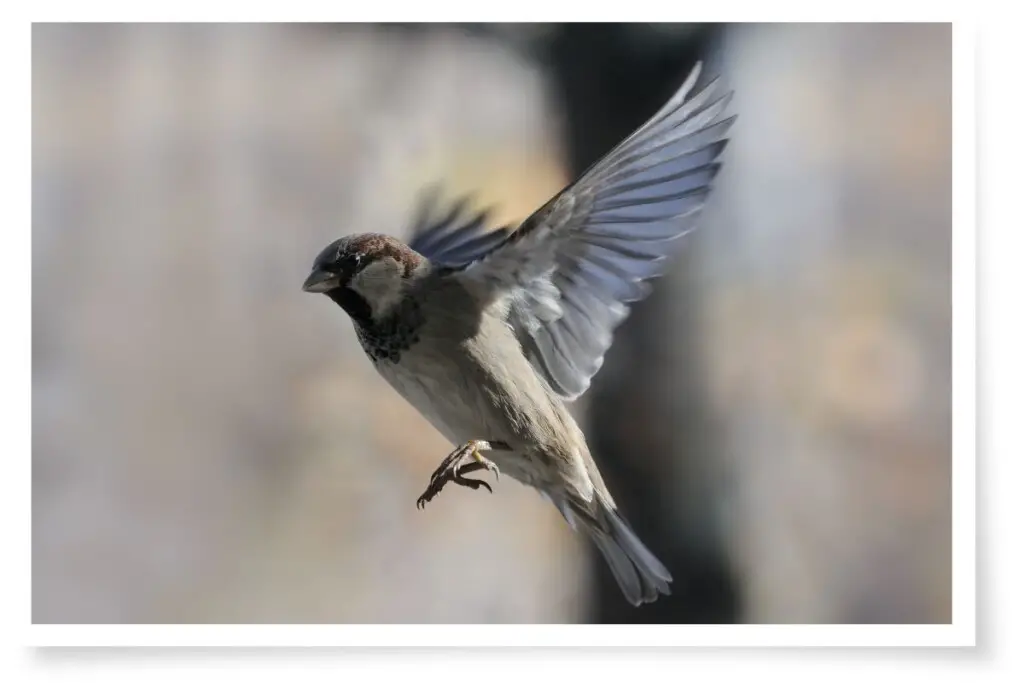
4. High-speed wings
These types of wings are long and thin like active soaring wings however they are not as long. Birds with this type of wing are very fast and, unlike birds with elliptical wings, can maintain that speed.
Examples of birds that have high-speed wings are swifts, ducks, falcons, and terns.
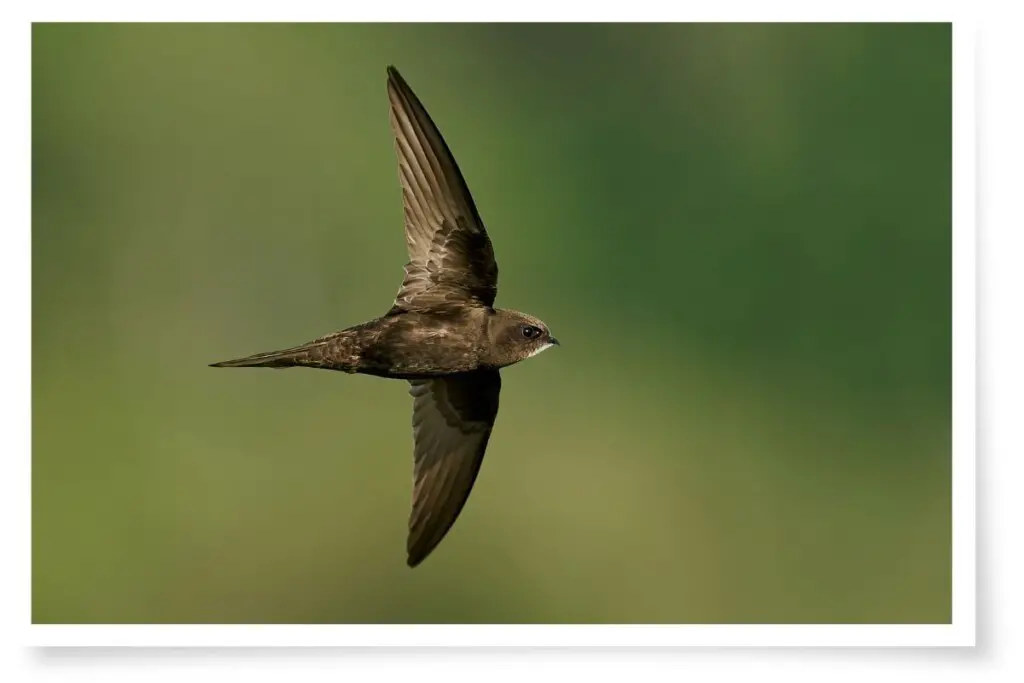
The Enemy Of Lift And Thrust
As Newton discovered; to every action, there is an equal and opposite reaction. Unfortunately for birds, while creating lift, they also have to deal with a force called drag. The drag is depicted in orange in the image below:
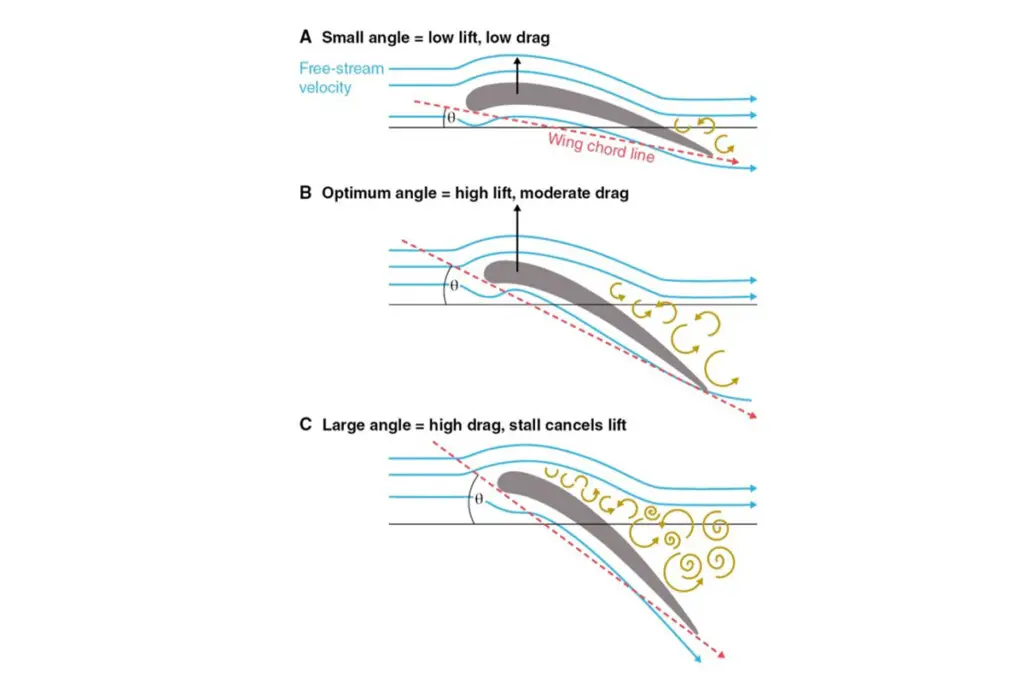
There are three forms of drag that a bird has to deal with:
- Induced drag – this is a direct result of accelerating air to produce lift. When air currents flow off the back of a bird’s wing, pockets of swirling air are created that oppose the direction of flight.
- Pressure drag – this is created when solid objects (a bird’s wings) displace the air, creating higher pressure on the front of the moving surface than on the rear.
- Friction drag – this is where air molecules “stick” to the surface of a bird’s wing.
One way birds cope with drag is through the use of their primary flight feathers. Eagles for example will spread the tips of their wings out, this creates more lift and also disperses the swirling vortices that create drag.
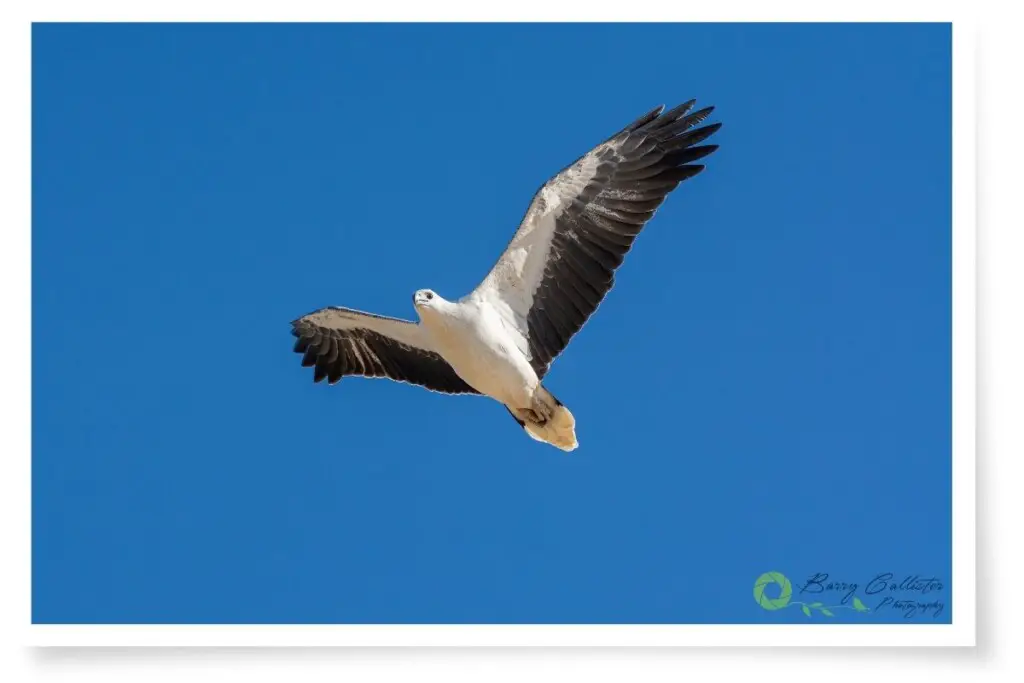
Birds’ tails also reduce pressure drag by reducing the width of the ‘wake’ behind the bird.

Lightweight Bodies Help Birds To Fly
Birds are very lightweight creatures. Every part of their bodies is designed to keep their weight to a minimum. They are basically perfect flying machines.
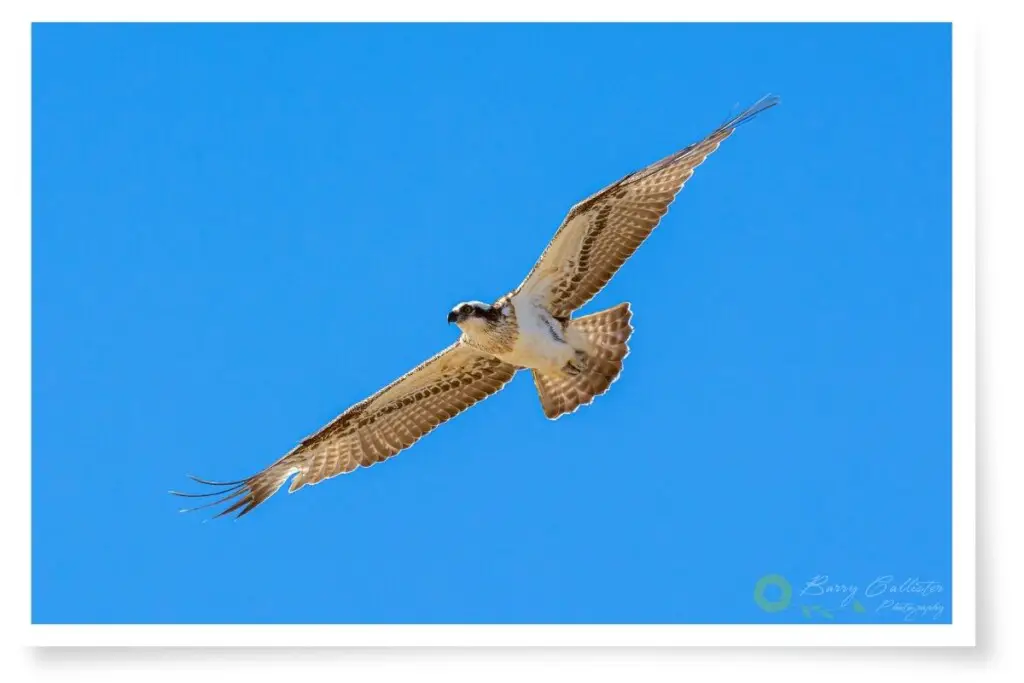
You should be familiar with the term “light as a feather”? Though birds are covered with feathers (between 1,500 and 25,000 of them), feathers only account for around 5-10% of a bird’s total body weight.
As light as they may be, a bird’s feathers are still around 2 to 3 times heavier than its skeleton.
The Avian Skeleton
Like our bones and those of other vertebrates, bird bones contain marrow. The difference in bird bones is they are what is called pneumatic. This means they contain pockets of air which help to keep the weight minimal.
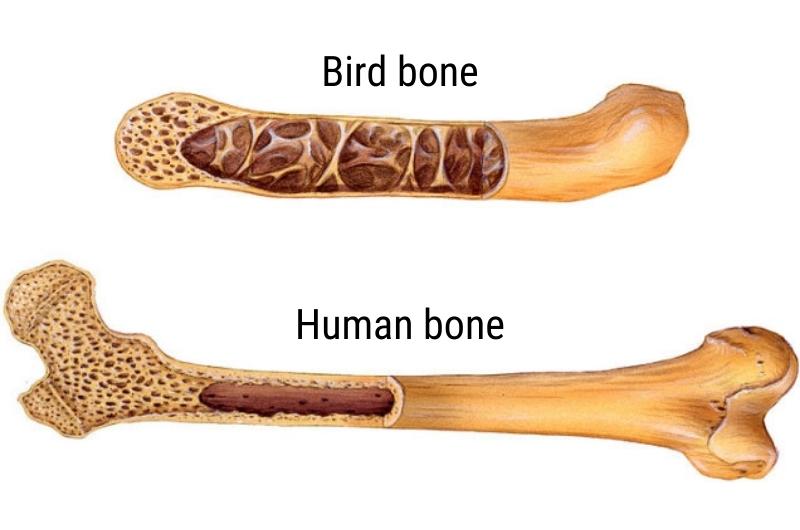
This internal spiderweb-like structure keeps the bones light while also ensuring they are strong and flexible enough to cope with the stresses of flight.
The air cavities in birds’ bones are connected to their air sacks and lungs which allows them to essentially breathe with their bones.
An integral bone of any bird is the sternum (breastbone) as it is where the major flight muscles attach. Some birds have a ridge along their sternum called the carina or keel. This is where the pectoralis and supracoracoideus muscles attach; these are the ones that provide power to the wings.
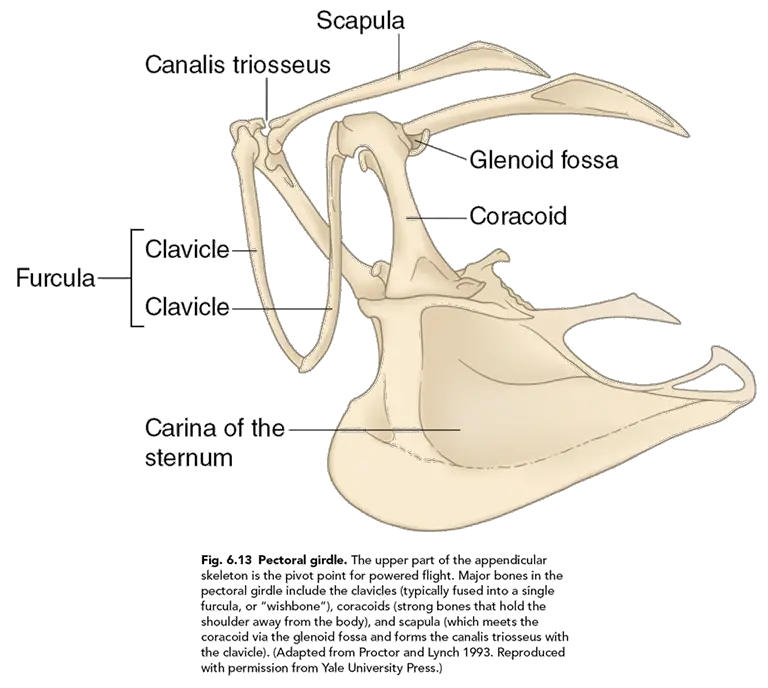
Muscles Made For Flight
An efficient skeletal system is nothing without muscles to help it move. Muscles are the “meat” of a bird and account for most of its weight. The pectoralis (chest muscles) and supracoracoideus (also in the chest) muscles account for about one-fifth of the weight of most birds.
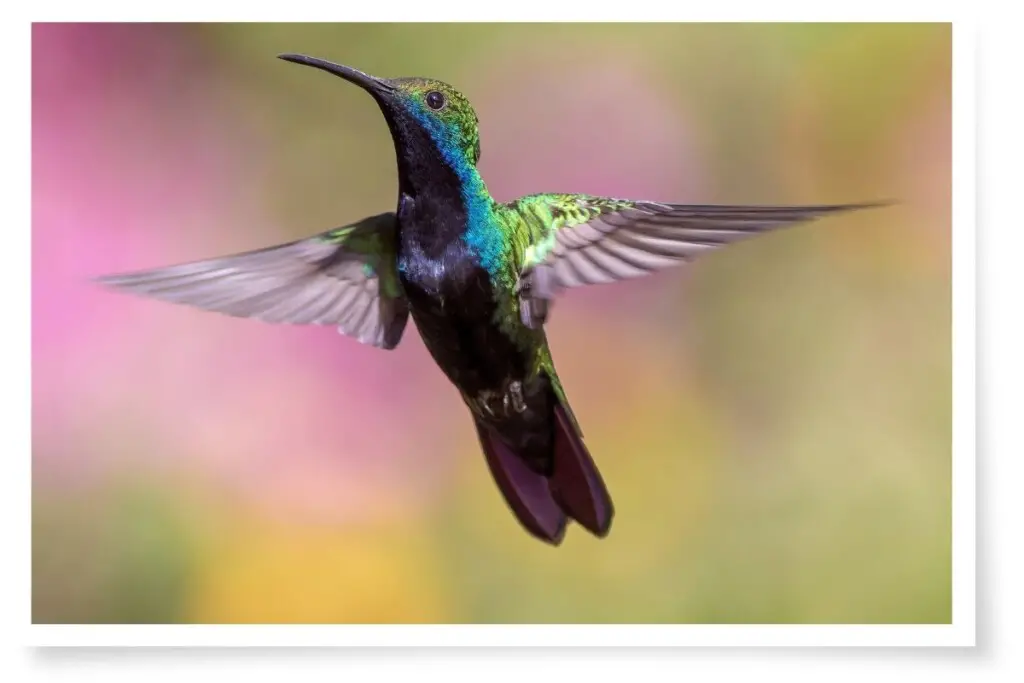
The most important muscles in a bird’s body are the chest muscles. Above I mentioned the pectoralis and supracoracoideus muscles; these are the key muscles involved in flight.
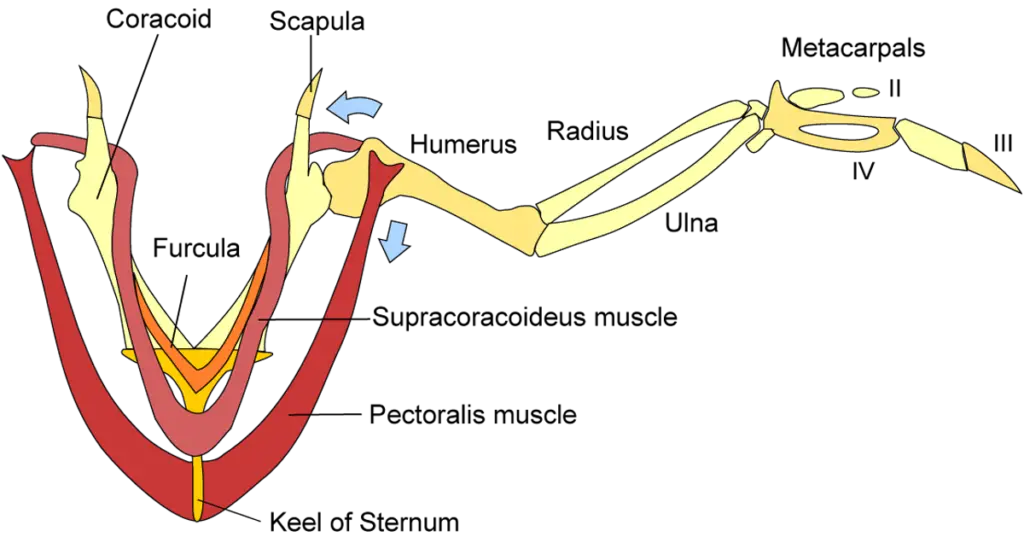
The pectoralis muscles are dedicated to the downstroke of the wings; they pull the humerus down as the supracoracoideus muscle stretches. During the upstroke, the supracoracoideus contracts, pulling the humerus back up.
This powerful muscle engine requires a great deal of energy which means a lot of oxygen.
Breathing For Flight
We have already touched on the fact that bird bones contain air sacks that are linked to the lungs and other air sacks. This is just one part of a respiratory system that is unique among vertebrates.
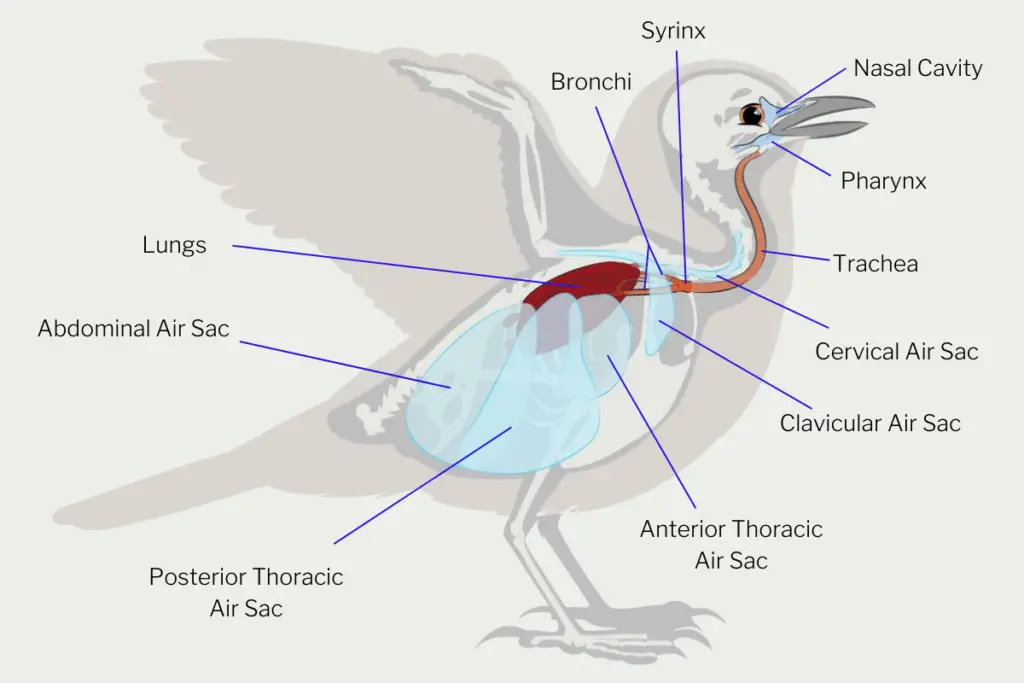
The first unique thing about how birds breathe is that their lungs do not expand and contract the way ours do. Their lungs are fixed between their ribs and vertebrae.
Their 5 air sacs help to extract more oxygen from each breath and thus produce more energy. Air is constantly being cycled around their respiratory systems.
During each inhalation, the air is stored in the various air sacs and then moved from one to the other during exhalation and subsequent inhalations.
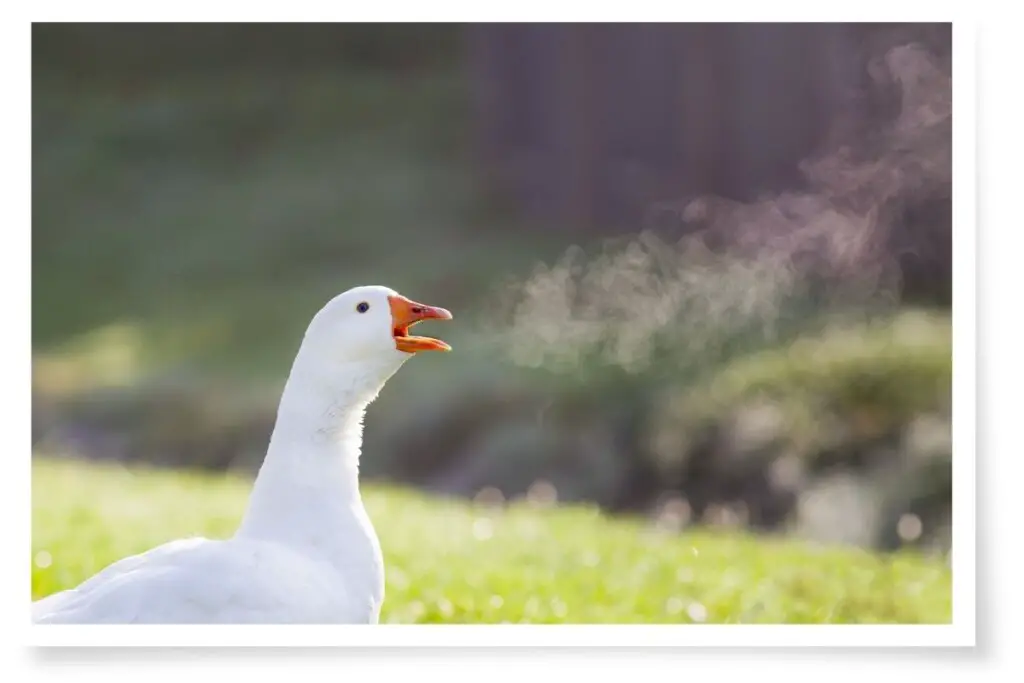
Read more about the airflow through the air sacs in this slide from the Handbook of Bird Biology.
Weight-saving adaptions
Everything about birds’ bodies is built for flight; their entire body, inside and out, is designed to be as light as possible to facilitate flight.
Their digestive systems move food through their bodies as efficiently as possible to keep weight down.
The reproductive systems of birds are super-efficient. The eggs form with embryos safely contained inside and are ejected from the bird’s body within around 24 hours. Flight would be impossible for female birds with the weight of live young inside their bodies.
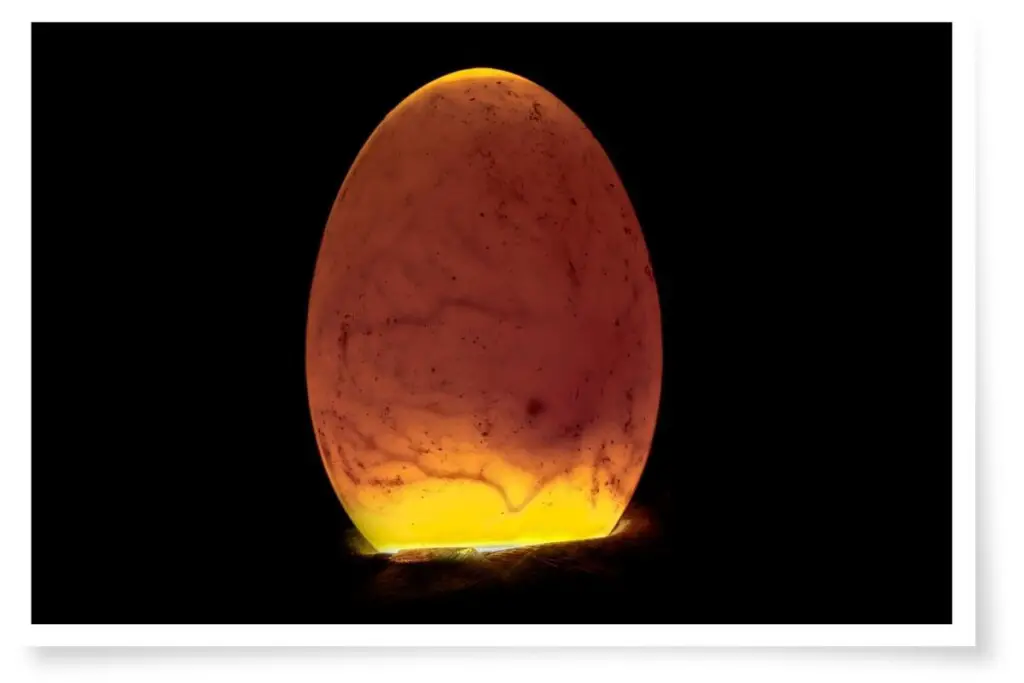
In female birds, only one ovary fully develops which is thought to be another incredible weight-saving adaption.
Birds’ skulls are thin, have large eye orbits, and usually account for just 1% of their total body weight. Their brains, though quite large compared to the sizes of their skulls, are quite light also; some weigh just ⅓ of a gram.
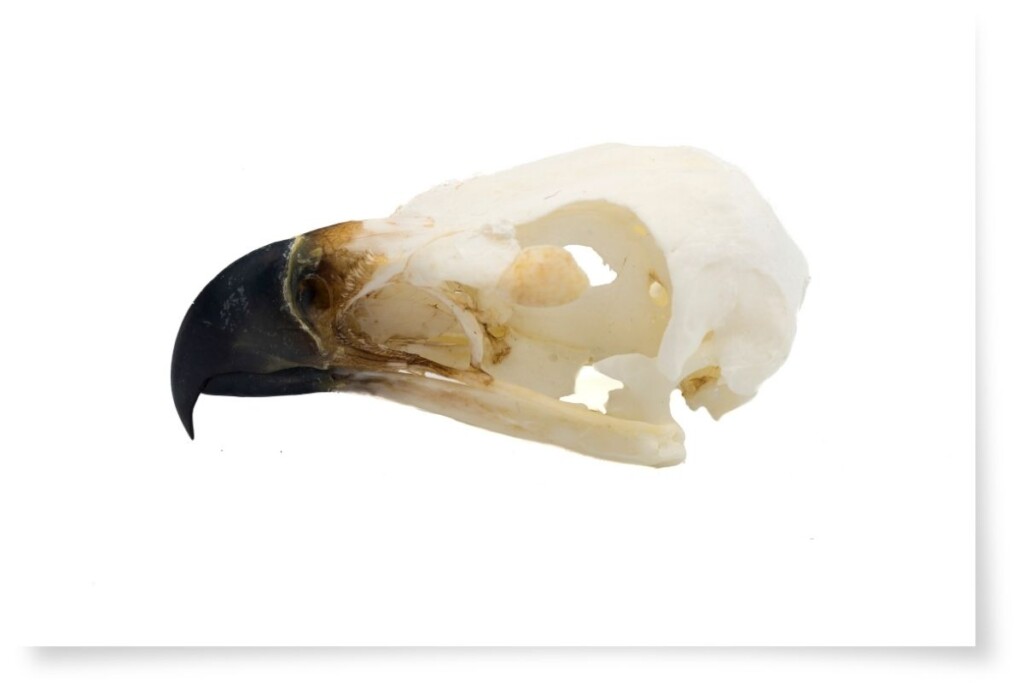
Of course, their feathers are…as light as feathers! This is not however the only advantage of feathers.
The Importance Of Feathers
Without their feathers, birds would be slaves to the ground just as we are. Feathers do so much more than simply look pretty. Let’s explore the advantages of bird feathers when it comes to flying.
Birds have 3 basic types of feathers and each has its own purpose.
- Down feathers – these are closest to a bird’s body and are the soft, fluffy feathers that serve to keep a bird warm.
- Contour feathers – these are the next layer above the down feathers. These give the bird its streamlined shape. They also help to repel water.
- Flight feathers – these are the feathers that form the majority of the wings and tails of birds. These feathers help birds generate lift and also give them control in the air.
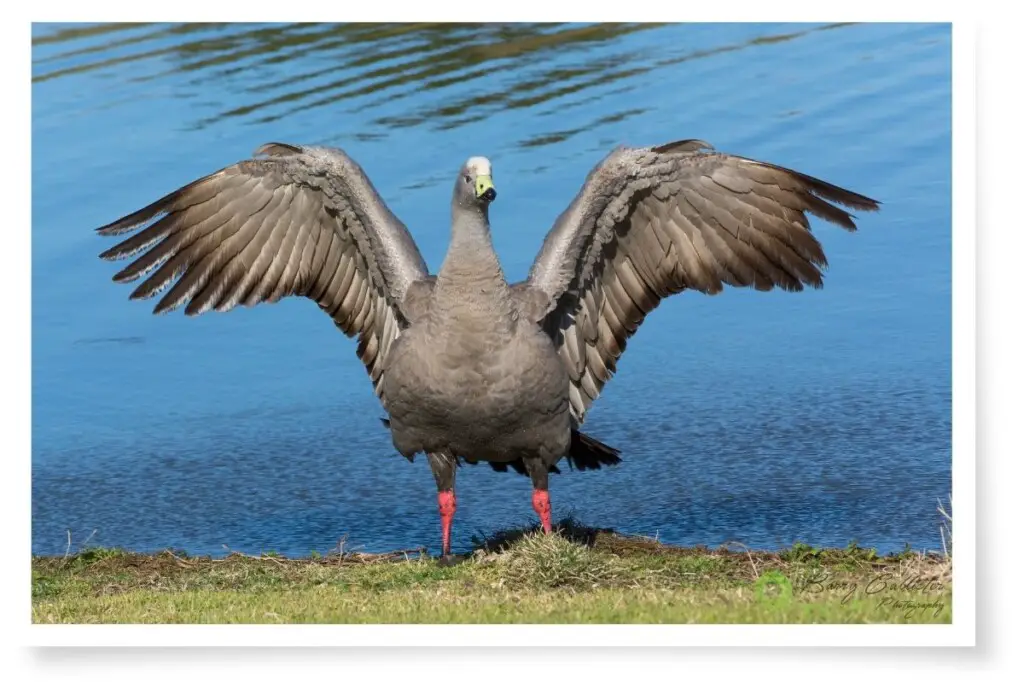
The most important feathers are the flight feathers, without which a bird would not be able to get into the air in the first place. These feathers create resistance with the air around them that generates lift. They are also crucial in controlling the direction of the bird’s flight.
How Do Birds Fly With Such Control
Birds control their direction during flight by altering the positioning of their wings, feathers, and tails. Exactly how birds do this is incredibly intricate and very difficult to describe. I will break it down to the most basic explanation.
Birds use their tails like a rudder and angle it to change direction. They can also use their tails like a parachute to slow their rate of flight and stall for landing.
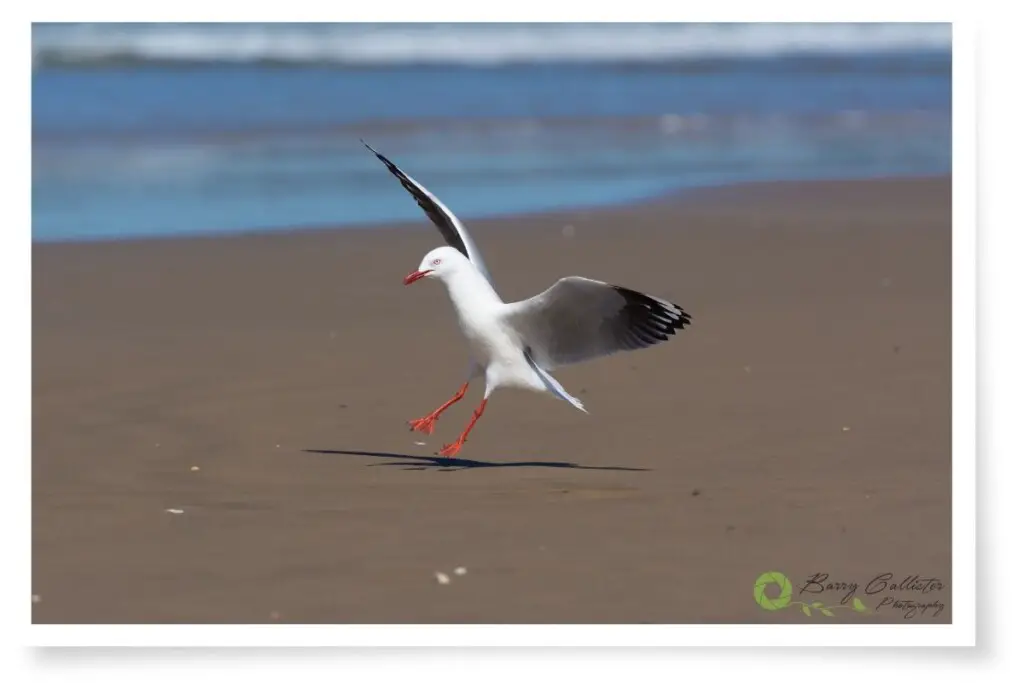
To effect direction change with their wings, birds will alter the angle of attack of each wing independently. They can also reposition their feathers to change the way the air flows through or over them to produce a change in direction.
You will even notice birds using body rolls and even their legs to make changes to their flight paths. Watch the video below to see these techniques in slow-motion action:
Conclusion
This article has barely touched the surface of how birds fly. There is much more technical data I could have put into the article but it would have been much longer and perhaps a little boring.
You now know a lot more about bird flight than you did before seeing this post. Next time you are out in the field watching birds, pay close attention to how they fly. It really is a wonder of nature.
References
- The Handbook Of Bird Biology – The Cornell Lab of Ornithology
- 20 Amazing Facts About Feathers – Treehugger
- Bird brains are dense—with neurons – Ars Technica
- Birds And Their Wing Shapes – The Cornell Lab of Ornithology
- Weight of a bird skull – Wikipedia
- How Do Birds Fly – The Pendulum Swing
